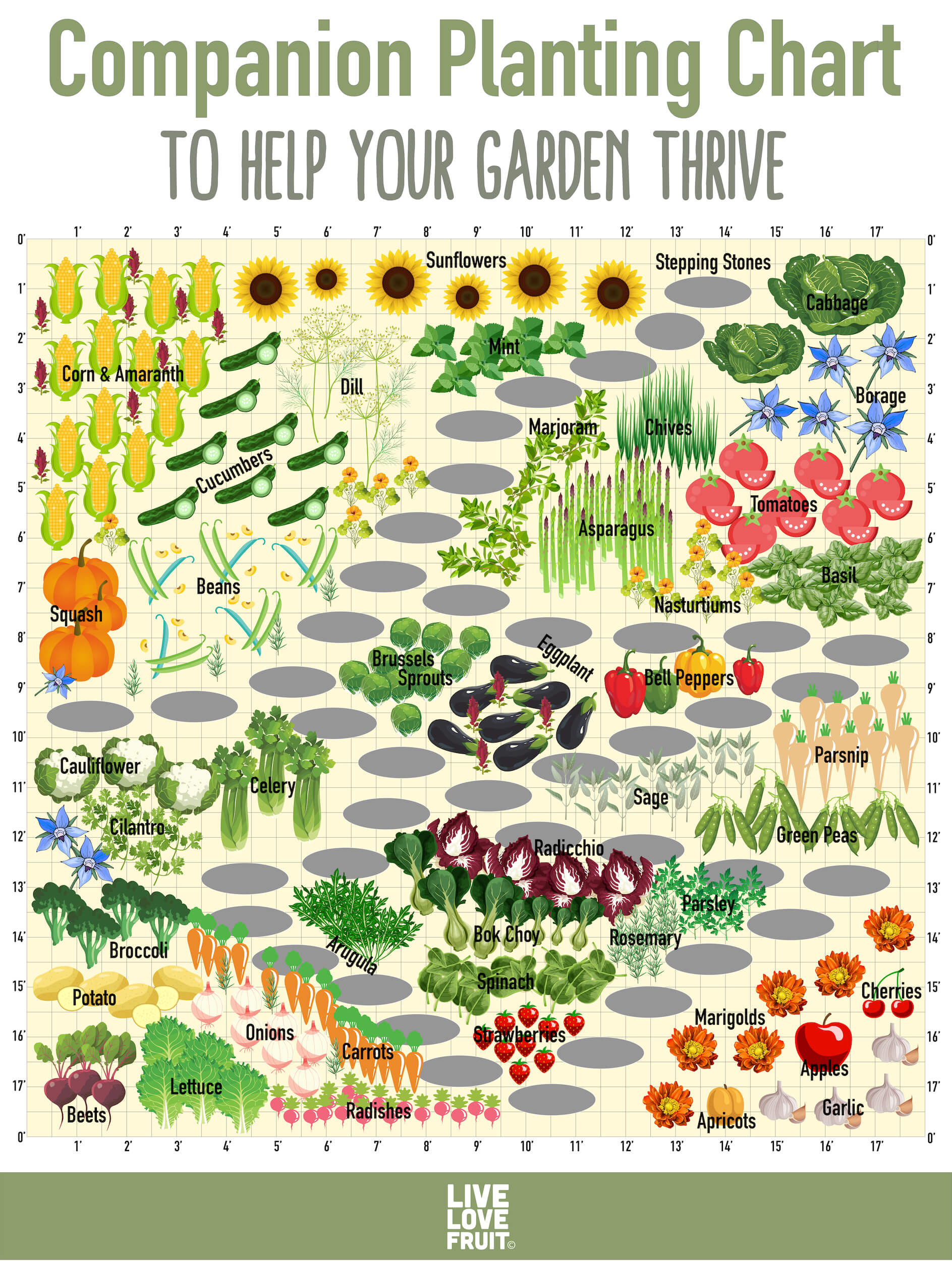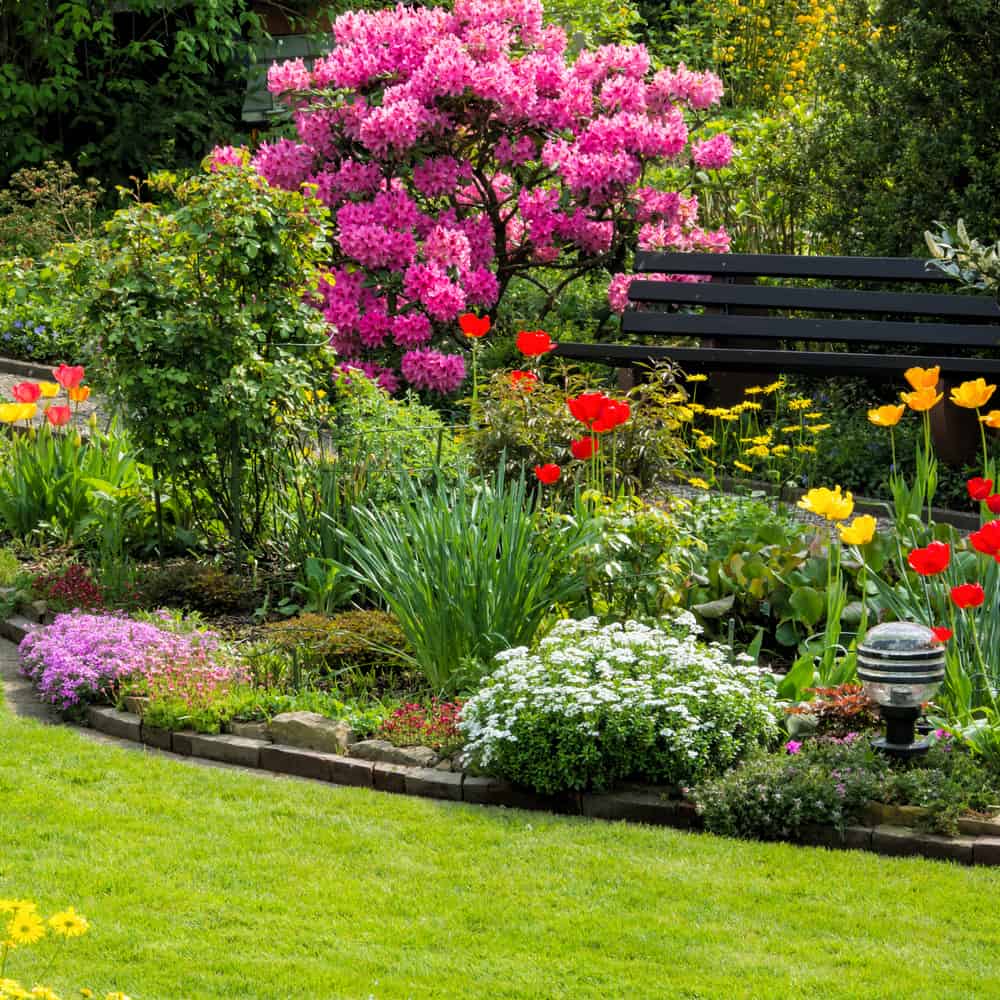The Art of Companion Planting: Combining Flowers and Apple Trees
Companion planting is a time-tested gardening technique that involves growing different plants together for mutual benefits. Planting flowers near apple trees is a perfect example of this strategy, offering numerous advantages such as attracting pollinators, promoting growth, and enhancing the overall aesthetic appeal of your landscape. By carefully selecting the right flowers to plant with apple trees, you can create a thriving, vibrant, and eco-friendly garden.
Understanding Apple Tree Pollination: A Key Factor in Flower Selection
Apple trees rely on pollination to produce fruit, making the selection of suitable flowers an essential aspect of successful companion planting. Pollination occurs when pollen is transferred from the male part (anther) of a flower to the female part (stigma) of another flower, allowing fertilization to take place. This process is typically facilitated by pollinators such as bees, butterflies, and other insects.
When planting flowers with apple trees, it is crucial to consider their blooming periods and compatibility with apple tree varieties. Cross-pollination, the transfer of pollen between two different apple tree varieties, often results in higher fruit yields and better-quality fruit. By selecting flowers that bloom simultaneously with apple trees, you can attract pollinators and enhance the pollination process.
Top Flower Varieties for Planting with Apple Trees
Selecting the right flowers to plant with apple trees is crucial for a thriving garden. Here are several flower varieties that are ideal companions for apple trees, considering their blooming periods, growth habits, and care requirements:
1. Bee Balm (Monarda didyma)
Bee balm is an attractive, aromatic perennial that blooms from mid to late summer. Its vibrant red, pink, or purple flowers attract bees, butterflies, and hummingbirds, making it an excellent choice for pollination support.
2. Yarrow (Achillea millefolium)
Yarrow is a drought-tolerant perennial with clusters of small flowers in various colors, including white, yellow, pink, and red. Blooming from early to late summer, yarrow attracts pollinators and beneficial insects, promoting a healthy garden ecosystem.
3. Phlox (Phlox paniculata)
Phlox is a showy, long-blooming perennial available in various colors, such as pink, red, white, and purple. Flowering from mid to late summer, phlox is an excellent source of nectar for pollinators, supporting apple tree pollination.
4. Bachelor’s Button (Centaurea cyanus)
Bachelor’s button is an annual flower with striking blue, pink, or white blooms. Its flowers are attractive to bees and butterflies, and its long blooming period (late spring to early fall) ensures continuous pollinator support.
5. Columbine (Aquilegia spp.)
Columbine is a hardy perennial with unique, nodding flowers in shades of red, pink, white, and yellow. Blooming in late spring to early summer, columbine is an early-season pollinator magnet, aiding in apple tree pollination.
How to Plant Flowers with Apple Trees: A Step-by-Step Guide
Planting flowers near apple trees can be a rewarding experience when done correctly. Follow these steps to ensure a successful planting process:
Step 1: Soil PreparationMaintaining a Flourishing Garden: Caring for Flowers and Apple Trees
Proper care and maintenance are essential for a thriving garden filled with flowers and apple trees. Here are some ongoing care and maintenance tips to ensure the health and vitality of your plants:
Watering
Both flowers and apple trees require consistent watering, especially during dry spells. Aim to provide about 1 inch of water per week, adjusting for local climate conditions and soil types. Water the base of the plants, avoiding wetting the foliage to prevent fungal diseases.
Pruning
Pruning is crucial for maintaining the shape, size, and health of apple trees and certain flower varieties. Prune apple trees in late winter or early spring, removing dead, diseased, or damaged branches. Prune flowers according to their specific pruning requirements, usually in late winter or early spring as well.
Pest Control
Monitor your garden regularly for signs of pests and diseases. Use organic or chemical pesticides sparingly and only when necessary, following the manufacturer’s instructions carefully. Encourage beneficial insects, such as ladybugs and lacewings, to help control pest populations.
Fertilization
Feed your apple trees and flowers with a balanced fertilizer according to their specific needs. Soil tests can help determine the appropriate fertilizer type and application rate. Generally, apply fertilizer in early spring, following the product label instructions.
Mulching
Mulch around the base of apple trees and flowers to conserve moisture, suppress weeds, and maintain a consistent soil temperature. Use organic materials, such as wood chips or straw, at a depth of 2-4 inches, keeping the mulch a few inches away from the plant stems.
Designing a Beautiful Landscape: Combining Flowers and Apple Trees for Maximum Impact
When designing your landscape, consider the visual impact of combining flowers and apple trees. By carefully selecting and arranging plants based on factors such as color, size, and shape, you can create a stunning and harmonious garden.
Color
Choose flowers with colors that complement or contrast with the apple tree blossoms and foliage. For example, if your apple tree has pink blossoms, consider planting red, yellow, or white flowers to create a vibrant and eye-catching display.
Size
Select flowers with varying heights and growth habits to add depth and interest to your landscape. Plant low-growing flowers around the base of the apple tree, while taller flowers can be placed further away, creating a layered effect.
Shape
Incorporate flowers with different shapes and textures to add visual variety. Combine rounded flower heads with spiky or feathery varieties, and consider using both single and double blooms. This approach will create a dynamic and engaging garden that captures the attention of passersby.
Seasonal Interest
Ensure your garden has year-round appeal by selecting flowers with varying bloom times. Plant early, mid, and late-season bloomers to create a continuous succession of color and interest. Additionally, consider incorporating flowers with attractive seed heads or interesting winter foliage to maintain visual appeal during the colder months.
Showcasing Your Garden: Highlighting the Best Flowers to Plant with Apple Trees
Creating a beautiful and harmonious landscape with flowers and apple trees can be achieved by combining the right plant varieties. Here are some successful flower and apple tree combinations to inspire your garden design:
1. Crabapple Trees and Coneflowers (Echinacea)
Crabapple trees produce attractive blossoms and small fruits, while coneflowers offer vibrant pink, purple, or white daisy-like flowers. Both plants bloom in the summer, creating a stunning display when planted together.
2. Granny Smith Apple Trees and Black-Eyed Susans (Rudbeckia)
Granny Smith apple trees have delicate white blossoms, while black-eyed Susans boast bright yellow or orange flowers with dark centers. This combination provides a beautiful contrast in color and form, making for an eye-catching garden feature.
3. Fuji Apple Trees and Daylilies (Hemerocallis)
Fuji apple trees produce pinkish-white blossoms, while daylilies offer a wide range of colors, from soft pastels to vibrant oranges and reds. Planting these two varieties together creates a visually appealing and diverse landscape.
4. Gala Apple Trees and Salvia
Gala apple trees have light pink blossoms, while salvias display spikes of bright blue, purple, or red flowers. This combination adds a pop of color and creates a striking contrast in your garden.
5. Honeycrisp Apple Trees and Peonies
Honeycrisp apple trees produce beautiful white blossoms, while peonies offer large, showy flowers in various colors, including pink, red, and white. This combination adds a touch of elegance and sophistication to any landscape.
Maximizing the Benefits of Companion Planting: Flowers and Apple Trees
Companion planting flowers with apple trees offers numerous environmental, aesthetic, and practical benefits, making it an essential gardening strategy. Here are some advantages of incorporating flowers into your apple tree landscape:
Attracting Pollinators
Flowers serve as a natural magnet for pollinators such as bees, butterflies, and hummingbirds. By planting flowers near apple trees, you increase the likelihood of successful pollination, leading to a higher yield of larger, better-quality fruit.
Promoting Growth
Some flowers release chemicals into the soil that can improve the growth and health of nearby plants, including apple trees. This natural process, known as allelopathy, can help suppress weeds, reduce pests, and enhance the overall vitality of your garden.
Aesthetic Appeal
Flowers add color, texture, and visual interest to your landscape, complementing the beauty of apple trees. By carefully selecting and arranging flowers and apple trees, you can create a stunning and harmonious garden that enhances your outdoor living space.
Pest Control
Many flowers serve as hosts for beneficial insects that prey on pests that can damage apple trees. By planting flowers near apple trees, you encourage the presence of these natural predators, reducing the need for chemical pesticides and promoting a healthier, more sustainable garden ecosystem.
Soil Health
Flowers, like apple trees, contribute to soil health by adding organic matter and improving soil structure. This symbiotic relationship helps maintain a balanced, thriving garden environment, reducing the need for synthetic fertilizers and promoting long-term sustainability.







